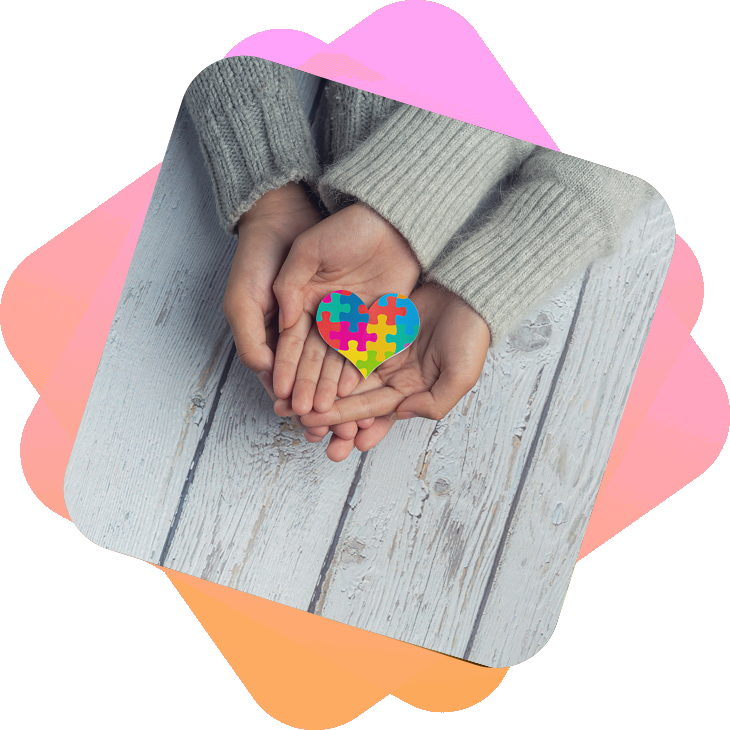Areas in Special Education:
*IEP:
The Individualized Education Program (IEP) is crucial in Special Education as it provides a tailored roadmap to address each child’s unique needs, ensuring they receive the support and resources necessary for academic and personal success.
*Group Therapy:
Group Therapy allows children for opportunity to generalize skills learned in therapy with a variety of people, which in turn encourages mastery of skills. Within a small group, children can experience emotional support, understanding and encouragement from one another.
Our approach to Special Education
We begin with a comprehensive evaluation to identity a child's strengths and challenges. Based on this, we create IEP plan and monitor the child progress. Our approach may include:
- Individualized Approach
Teaching is tailored to each student’s needs and abilities (via IEP).
- Inclusive Approach
Students with disabilities learn alongside peers in general classrooms.
- Therapeutic Approach
Includes support like speech therapy, occupational therapy, or counselling.
- Behavioural Approach (ABA)
Uses rewards and step-by-step teaching to improve behaviour and learning.
- Multi-Sensory Approach
Combines sight, sound, touch, and movement to help learning (e.g., Jolly Phonics).
- Life Skills Approach
Focus on real-life tasks like cooking, cleaning, or handling money.
- Technology-Based Approach
Uses assistive devices and educational apps to support learning.
Methods in Special Education (How teaching is delivered)
- Task Analysis
Breaking a skill into small, manageable steps.
- Scaffolding
Giving help at first, then reducing support as the child learns.
- Modelling
The teacher or peer shows how to do a task, and the student copies.
- Prompting and Fading
Giving cues (verbal, visual, or physical) and slowly removing them.
- Errorless Learning
Teaching in a way that avoids mistakes and builds confidence.
- Use of Visual Aids
Using charts, pictures, and schedules to guide learning and behavior.
- Repetition and Practice
Repeating activities until the child masters the skill.
Benefits of Special Education at Al Najma Rehabilitation Center
-
To provide individual attention to each child.
-
To meet the unique needs of each child.
-
To promote access, participation, and progress in the general education curriculum.
-
To support academic, social, emotional, and behavioural development.
-
To help and guide the parents.
-
To provides a structured learning program for the child in accordance with his deficit skills
-
To help to develop basic skills for personal independence
Why families trust Al Najma Centre
Al Najma Rehabilitation Centre in karama is recognized for its comprehensive and compassionate approach to special education. Here are some of the key qualities that make their services stand out:
Experienced and Multidisciplinary Team
The centre boasts a team of qualified professionals, including special education teachers, speech-language pathologists, occupational therapists, and psychologists. Their collaborative approach ensures that each child receives personalized and holistic support .
Individualized Programs
Recognizing that every child is unique, Al Najma develops tailored educational and therapeutic plans. These plans address the specific developmental, social, and emotional needs of each student, fostering growth in a respectful and dignified manner .
Inclusive and Supportive Environment
The centre emphasizes creating a safe, healthy, and aesthetically pleasing environment. This setting encourages students to thrive, promoting self-esteem and mutual respect among students, therapists, and parents .
Affordable and Accessible Services
Committed to serving the community, Al Najma offers cost-effective training and rehabilitation services. Their programs are designed to be accessible to families from various backgrounds, ensuring that more children can benefit from their support .
Proven Track Record
Many children at Al Najma have made significant progress, achieving developmental milestones under the centre’s care. These success stories highlight the effectiveness of their programs and the dedication of their staff .
Begin your child's Special Education Journey today!
At Al Najma Rehabilitation Centre, we are dedicated to providing personalized, compassionate, and effective special education services for children with diverse learning needs. Our experienced team of educators, therapists, and specialists create individualized programs that support the academic, social, and emotional development of each child. With a safe, inclusive, and supportive environment, we empower students to reach their full potential.
“We are welcoming children to a world of learning, growth, and endless possibilities at Al Najma Rehabilitation Centre.”
Visit us today to learn more about our tailored programs!

